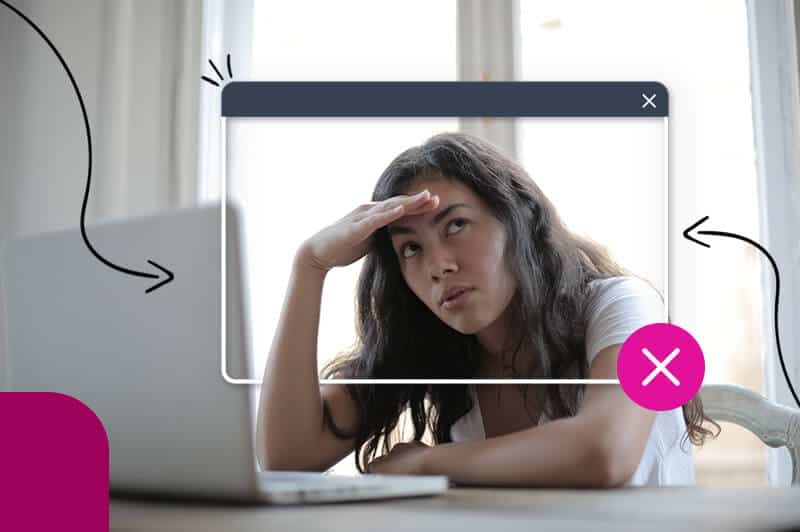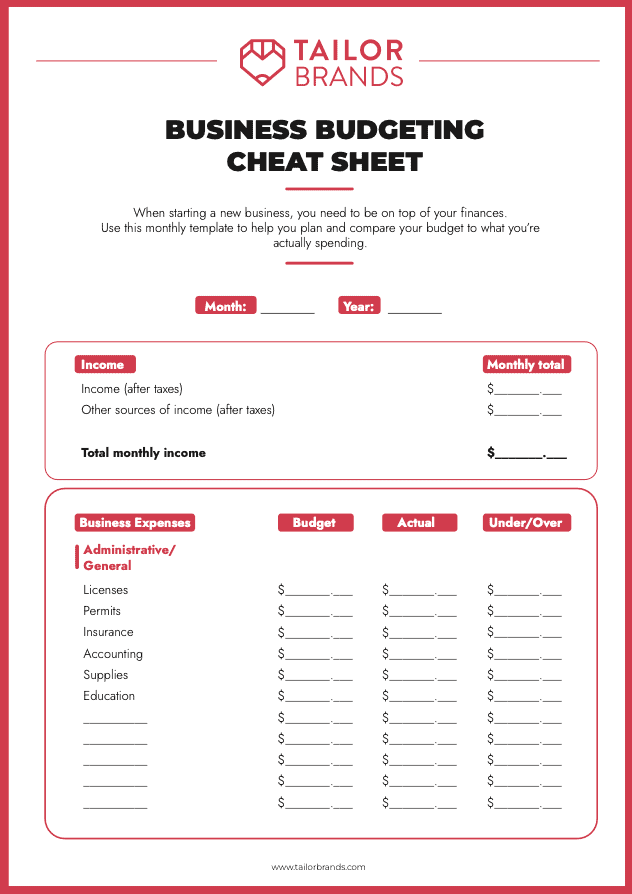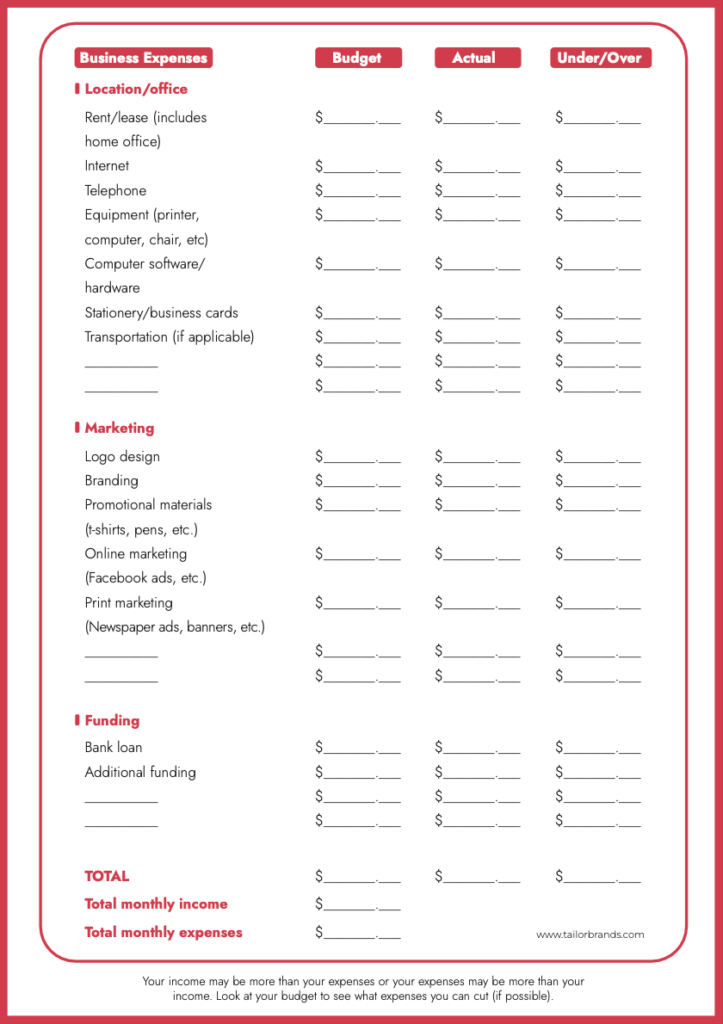
You’ve been grinding away at your side hustle in the evenings after work and during the weekends. You were maybe doing it for some extra cash, but now you’re starting to see real value in your business and its potential.
What can I say? That’s great! I love hearing when side hustles grow into full time businesses. It hits close to home since I also had my own business that started as a side hustle.
But that said, I know that with growth comes tough decisions. Can you work a full time job and be the owner of a growing business?
You may be thinking about quitting your full time job, but aren’t sure if you’re making enough money to turn your side hustle into a full time business.
While you could juggle both your side hustle and job initially, now it’s becoming increasingly harder to handle both responsibilities. So, something’s gotta give.
Good thing you’re here because that’s what I’m going to help you figure out. In this article, you will learn when you’re making enough money to take your business full time.

So far, your side hustle is doing really well. But is it doing well enough for you to give your two weeks’ notice and start focusing on it full time?
Well, only you know the answer to that question. However, below are helpful signs that can show if your side hustle is ready to become a full time business.
I know, I know. No one likes having to sit down and write a business plan. It kinda ruins the image of your side hustle becoming a hit out of thin air.
But when it comes to business, nothing is by mistake. All successful businesses start with a business plan. And if you have a business plan already mapped out, then you’re on the right track and you can skip this point. If you don’t have a business plan, I’m going to talk about it in a bit.
Your side hustle isn’t what I would call a side hustle anymore. When you sit down and look at the numbers, your business can afford your current lifestyle without you working your other full time job.
And if that’s the case, it’s a sign your business can financially support your current lifestyle without making any drastic changes.
Most people start a side hustle for this reason. A side hustle is a great way to create an emergency fund or put it in savings. But you’ve surpassed this.
Your emergency fund is topped, and you can put money into savings and still live comfortably with the income from your business.
You’ve been working on your side hustle for months, even years, and now that you’ve sat down and done the number crunching, you see there’s consistency in the income you’re making every month.
Of course, in the beginning, your side hustle wasn’t stable. Some months you made more, some less. However, now, you can see consistency from month to month, and you know how much you’re going to make.
This consistency is an important (and positive) sign that your side hustle is turning into a business.
Quitting your job to turn your side hustle into a full time business isn’t an easy decision to make. Your current job is stable; you know there’s always a pay cheque at the end of the month.
So, I don’t want to say you should feel 100% comfortable with quitting your current job because you won’t be.
You’re going to be nervous and hoping that it all works out. Those are normal feelings to have. However, you should feel financially secure enough to quit your job.
To feel comfortable, save 3 to 6 months worth of expenses. That way, you’ll be able to focus solely on your business and not how you will pay your rent.

You know the signs of when your side hustle is ready to become a full time business, but it may be too soon to take that leap.
Does it mean your side hustle will always be a side hustle? Of course, not.
All this means is that your side hustle needs a little more time to develop (and that’s not a bad thing).
However, there could be some underlying reasons why your side hustle isn’t ready to be a full time business just yet.
So what do I mean by this? Let me give you a personal example.
My side hustle was freelancing content writing. I had a couple of clients, things were going well, but it wasn’t growing.
Why? Because I was holding myself back. I would overwhelm myself with large goals, get scared, and then avoid taking any steps forward.
And this could be something you’re doing. Maybe you’re scared to increase your prices, take on more work, or pitch to new clients.
However your fear of rejection is being portrayed through your business, it’s keeping you from growing.
If you’re struggling with fear, focus on creating small, achievable goals. Making small steps towards your goal can help combat your fear as you’re not taking a giant leap; rather, a well-calculated step forward.
For example, if your goal is to make $10.00 more on your product, but you’re worried it’s too much of a price hike, then increase it by $2.00 and gauge your audience’s reaction. Then wait another couple of months and increase the price again by $2.00. Within half a year, you’ll have reached your goal.
It’s not easy growing a side hustle into a full time business. What makes it even harder is when you don’t know anything about the market you’re selling in.
Before doing anything, create a business plan.
A business plan is a strategic tool for business owners that lays out specific (and necessary) short and long-term steps they need to take to help their business grow.
Think of a business plan as a road map. When you’re planning a road trip, you want to know where you’re going, how much gas you’ll need, and how much the trip will cost you.
And that’s what a business plan does. It includes your business objectives, information about your product/service, marketing strategies, financial plan, target audience, and logistics.
I didn’t have a business plan when my business was shifting to full time and it really hindered my business’s growth. Without a business plan, I stayed in the same place.
You may have more than one side hustle, many people do.
But do you know the quote, “a jack of all trades is a master of none”?
And while I get it, you’re trying to make as much money as possible, if you’re considering turning one side hustle into a full time business, you’ll need to invest all your energy and time into it.
If you’re spread out too thin and working a few different jobs, you’re not giving this business a chance to flourish.
If anything, you’ll get burnt out after some time and will ditch the business altogether – and you don’t want to do that. If you’re set on taking one side hustle and turning it into a full time business, go all in.
After reading this, you may have a general answer in your head of whether you’re ready to take your business full time.
However, before jumping to conclusions, it’s always a good idea to look at the numbers.
Below is our business budgeting cheat sheet that will help you understand whether you can afford to take your business full time. This cheat sheet will help you get the real answer.


Download this PDF template and have it available whenever you need.

After doing the calculations, you may have come to the conclusion that your side hustle may not be ready to become a full time business, but it’s definitely a goal you’re working towards.
So, how do you grow your side hustle into a full time business? Good question. The steps below will help your business go to the next level.
Like I said before if you have a few side hustles you’re juggling on top of your day job, you’re going to have to sacrifice something.
You cannot give 100% to all of your commitments, especially if you’re trying to take a side hustle and make it a full time business.
So, if you’re making the decision to invest your time in one side hustle, then do that. Of course, you still have your day job, but other than that, you shouldn’t have other work commitments. Your side hustle will need a lot of your energy and time.
Why am I emphasizing this? Because I learned the hard way. I was taking on way too much and in the end, nothing worked. But when I started to focus my attention on just my side hustle, that’s when it started to grow.
I’ve talked about business plans a couple of times in the post because I want you to see how important this step is. You really need one!
Putting your business on paper helps you see your business, your audience, and how you envision the future.
A basic business plan can do wonders. Make sure it includes:
Once written out, you’ll have a detailed document of your business, market, audience, and competitors. With this information, you can effectively plan your marketing strategy.
It doesn’t have to be fancy. For example, a business plan write-up can look something like this:
My Business Plan
Business Idea: Vegan cupcakes
Business Name: Vegan delight
Target Market & Demographics: My target market is men and women between 19-45 years, married or single, who are university graduates, make an income of $80,000/year, love outdoor sports, healthy living, vegan/vegetarian lifestyle, animals, and travel. They enjoy using Facebook and Instagram.
Marketing: I will post video/image/text content on Facebook and Instagram. My budget per month is $350 for ad spending.
Financial information: I have a $50,000 loan with Citi Bank. My operating expenses are $2000 per month. I will sell one cupcake for $4.00.
Goals: my short-term goal is to legalize my business as an LLC. My long-term goal for this year is to create a monthly income of $5000.
Now, this is just an example of a business plan. Naturally, when you write your business plan, it’ll include more detailed and precise information. However, the example above gives you an idea of what your business plan should include. Of course, the more information you have for each section, the better.
Check out this post for more information on how to create a business plan.
I wrote above that in your business plan, you need to conduct market research. This is an important step you shouldn’t overlook.
Market research helps you understand who your market is – in other words, the people who will buy your product or service.
By understanding who your market is, you’ll be able to align your message with their needs and pain points.
For example, if you’re selling dog treats, you’ll want to find out what the market is saying about the current dog treats being offered (likes, dislikes), what they’re buying, and who they’re buying dog treats from.
To learn more about how to conduct market/audience research, click here.
When transforming your side hustle into a full time business, it’s important to take the right steps to separate your personal and business finances. If not, things can get messy.
While your side hustle gave you some extra cash, a full time business needs to be a legal and professional entity.
Since you’re the boss, you’ll need to decide how you will establish your business. Will it be a sole proprietorship, a limited liability company (LLC), or a partnership?
While it may seem like a daunting task, you can hire professional services to do it for you (sometimes it’s just easier to let the pros do it).
Creating a product or service is only half of it. The other half is getting people to see your product or service. And that’s where marketing can help.
Here’s what you need to ask yourself: How are you going to attract potential customers?
Of course, by doing market/audience research, you’ll already know the answers to this question as you’ll know who your audience is and what they need from you.
So, with your audience research in hand, you’ll be able to develop a strategy of how you’re going to get their attention on social media (and this is really important).
Because where they are, you need to be. When you know this information, then you can build a marketing strategy.
So here are some steps to follow to help you create a marketing strategy:
Step 1: Create an audience persona. This is a part of your business plan. It’s a crucial step you need to take before developing a marketing strategy. Your audience persona will help you understand who you’re marketing to.
Step 2: Research your competitors. Your competition can be helpful to understand what type of content your audience engages with. Check out the social media profiles of your competition and see what they’re doing. Are they on Facebook? Instagram? Tiktok? What are they posting that gets the most engagement? When do they post?
Step 3: Where are you going to post? You should know which social media platforms your business is going to be on and the goal of that channel. Is your goal to be on Facebook to gain brand awareness? Gain subscribers?
Step 4: Know your budget. Even if you don’t have any money to invest in your marketing budget, it’s okay. You need to know where you stand. If you do have a budget, how much are you willing to invest each month? More importantly, what are you going to invest in? Instagram ads? Boosting Facebook posts?
Step 5: Set up your analytics. Do you have Google Analytics? If not, you should get it (and it’s free!). Spend some time understanding the data you can retrieve from Google Analytics and what it means in relation to your business. This data will help you understand your audience and make adjustments to your marketing. Maybe the data will show you to invest more in Facebook ads rather than Instagram.
Once you finished these steps, you’ll have a completed marketing strategy.
I know you have a busy life and sometimes, when we’re busy, we push important things aside no matter how committed we are to them.
That said, you can set yourself some boundaries to prevent that from happening.
Dedicate one hour every day to planning your business. One hour goes by fast, it’s an episode of Inventing Anna.
Each day, before or after your day job, sit down and continue planning your marketing strategy, updating your business plan or target audience, or working on legalizing your business. I know you have a list of things to do, so avoid the extra stress by taking on achievable tasks every day.
For example, if you want to plan your marketing strategy, on Monday, you’ll set up your social media pages. On Tuesday, you’ll map out your weekly content schedule. On Wednesday and Thursday, you’ll go to Canva and explore the features and watch YouTube videos on how to create social media posts, and so on.
By the end of the week, you’ll have everything accomplished for you to start creating content.
You may be wondering why this is important, but just hear me out first. Deciding on a day you’ll quit your day job is a great way to help you complete your goals and stay focused. You know exactly which day you’ll be taking control of your business full time.
Give yourself a reasonable amount of time – if you don’t give yourself enough time, you’ll feel overwhelmed. On the other hand, if you give yourself too much time, you may lose motivation.
Having a day job and a side hustle is no easy task. So, before anything, pat yourself on the back. I know you’re putting in the hard work.
Whether your business is ready to become full time or not, use the information above to help turn your side hustle into a successful full time business.
This portion of our website is for informational or educational purposes only. Tailor Brands is not a law firm, and the information on this website does not constitute legal advice. All statements, opinions, recommendations, and conclusions are solely the expression of the author and provided on an as-is basis. Accordingly, Tailor Brands is not responsible for the information and/or its accuracy or completeness. It also does not indicate any affiliation between Tailor Brands and any other brands, services or logos on this page.
Products
Resources
©2025 Copyright Tailor Brands